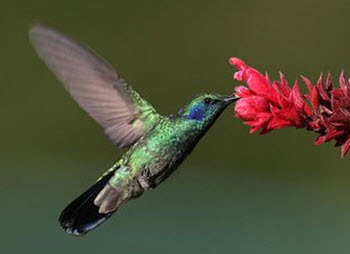Contents
Having hummingbirds in your garden can be of great help, plus it adds a magical and beautiful presence in your backyard utopia. Hours can be spend watching them fly around with such grace, going about their business of nectar sipping and avoiding predators with their flying gymnastics. And as for a helping hand, hummingbirds are what you call active pollinators, which means they seek out many flowers in a single day in search of nectar and in turn pollinate them as they go. Furthermore hummingbirds can also have a great impact on the populations of pests and insect in your garden, not many people know this but hummingbirds eats large amounts of small bug to supply the protein needed for their vigorous flight.
Many hummingbirds migrate over long distances every year and many of the habitats they fly over are being destroyed I favor of urbanization and the small critters lose vital pit stops on their journey. This is where you as a resident of California come into the picture. California lies on a large migration track and has huge numbers of hummingbirds traveling through annually. You can attract the birds by planting the right plants, nectar-rich plants, and adding shade or maybe even a small water feature. The plants are the most important part. As most birds, hummingbirds have no sense of smell which means the fragrance are not of importance when choosing the right plants, but they do possess keen eyesight and choosing very bright colored plants, especially red, are advisable. Hummingbirds have also been observed to prefer flowers with tubular shapes over others.
The right plants
 So if you want to start putting out plants in your garden to attract hummingbirds, you have to do a little homework first. You will have to check the conditions in your garden and reference them with plants that fit the description in the paragraph above. To make it easier for you, underneath is a collection of plants species which does well in California’s hardiness zone;
So if you want to start putting out plants in your garden to attract hummingbirds, you have to do a little homework first. You will have to check the conditions in your garden and reference them with plants that fit the description in the paragraph above. To make it easier for you, underneath is a collection of plants species which does well in California’s hardiness zone;
Winter flowering
- Manzanitas (Arctostaphylos sp)
- Currants and Gooseberries (ribes sp)
- Wallflower (erysimum sp)
- Cacti (Opuntia sp)
Spring flowering
- Monkey Flowers (Diplacus sp)
- Snowberries (symphoricarpos sp)
- sage (Salvia sp)
- Liveforever (Dudley sp)
 Summer flowering
Summer flowering
- Penstemon sp.
- Lobelia sp.
- Honeysuckles (Lonicera sp)
- Lilium sp.
Fall Flowering
- California fuchsia (Zauschneria sp)
If you choose any of the plantes recommended here you will be successful, but there are many more kinds to explore if you are up for it. One last important thing to keep in mind when trying to lure in hummingbirds is possibilities for them to nest. Their nests are mostly located in small tree or shrubs with a loose branch structure, with no real preference on species. Hummingbirds makes their nests out of spider silk, so that it can expand with the baby inside it and it is therefore crucial not to remove spider webs from around your garden if you want the hummingbirds to stay a little longer.

